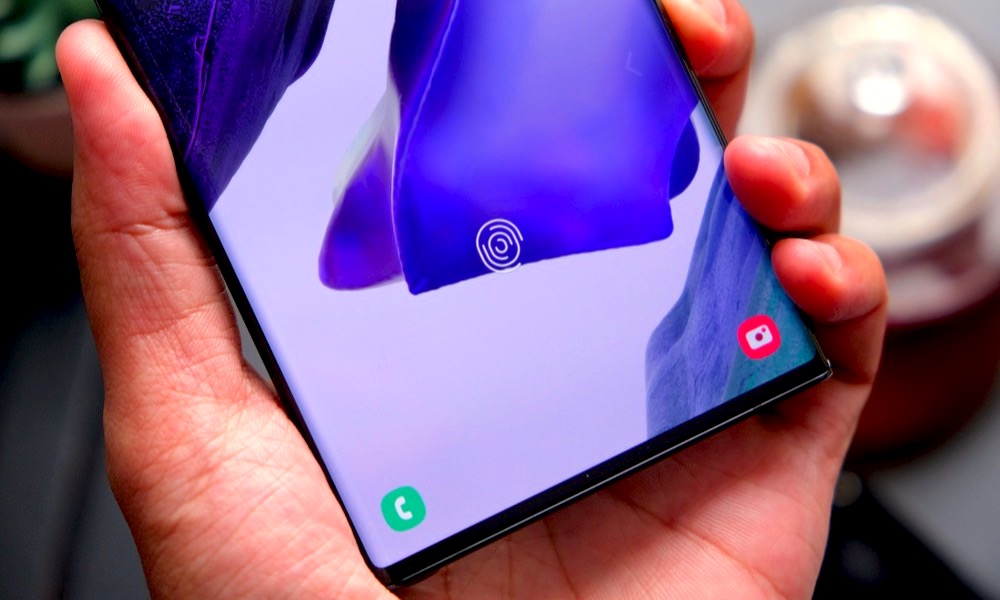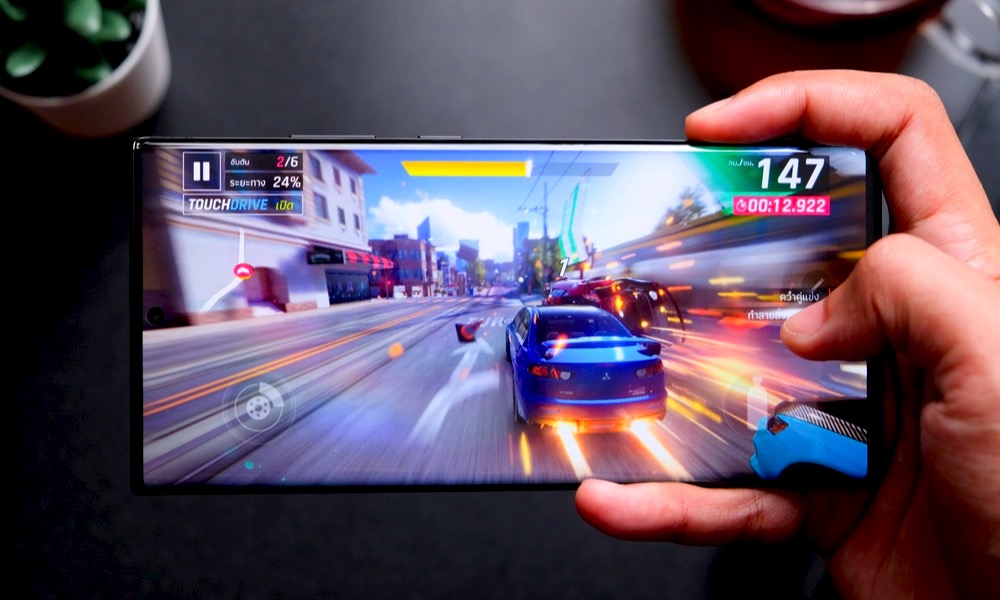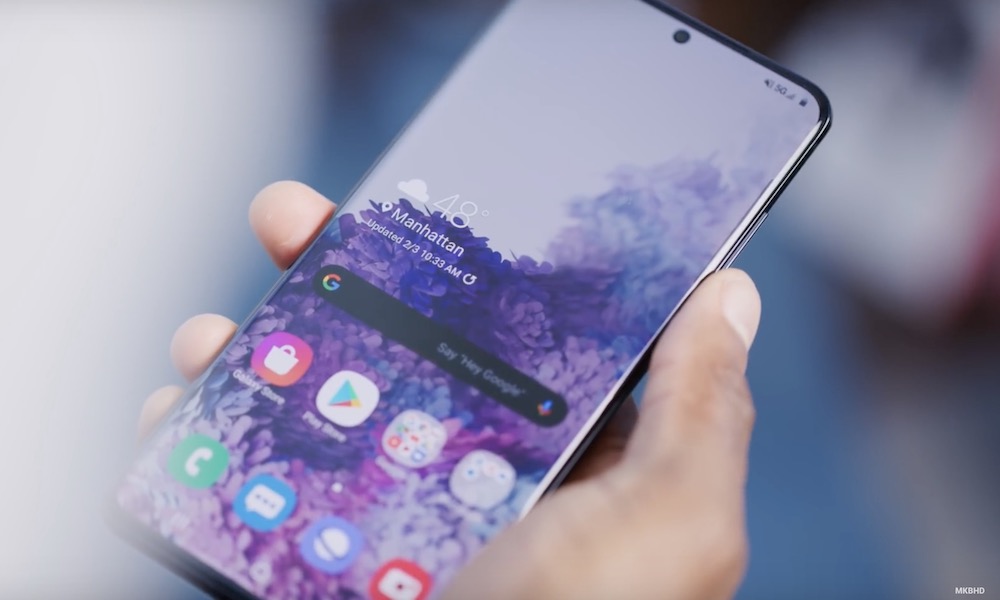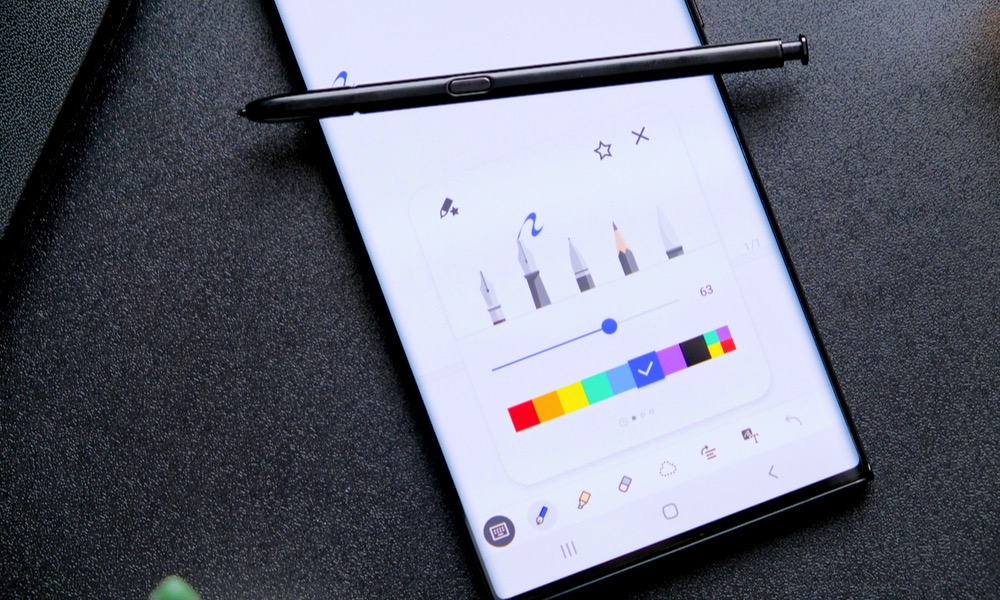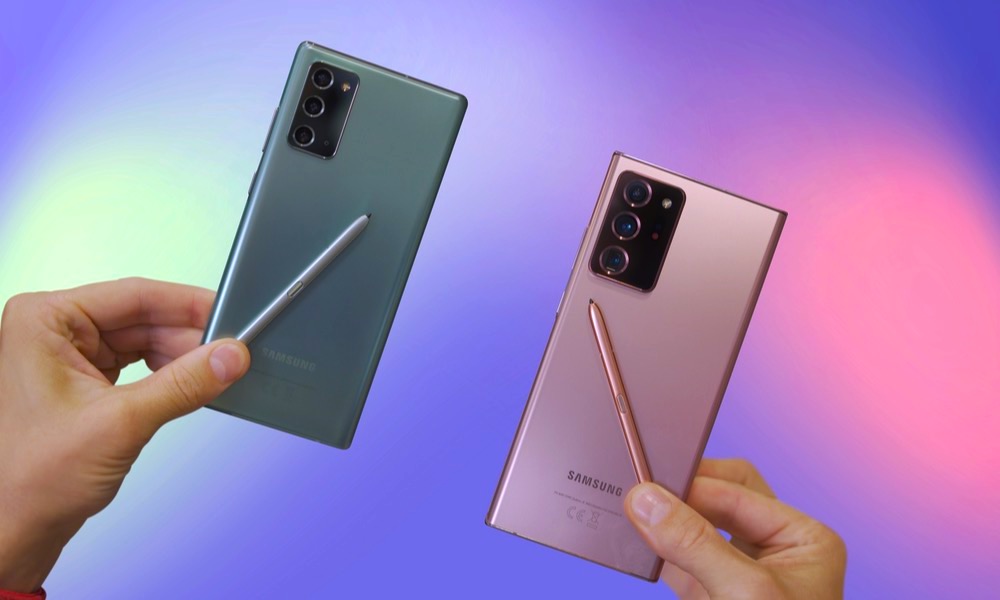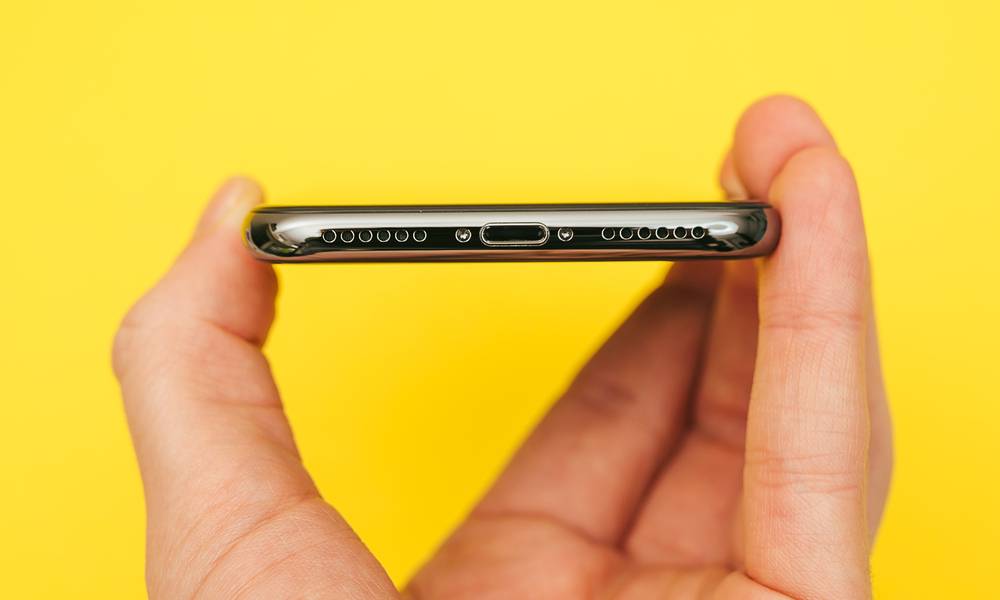7 Samsung Galaxy Note 20 Features the iPhone Needs ASAP
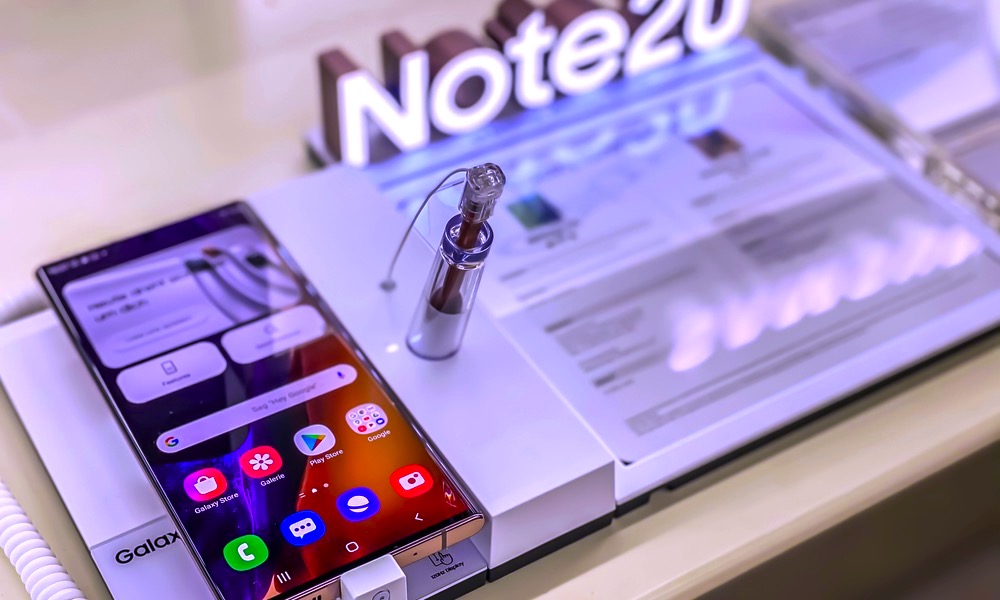 ms_pics_and_more / Shutterstock
ms_pics_and_more / Shutterstock
Samsung recently released its highest-end smartphones ever: the Samsung Galaxy Note 20 and the Samsung Galaxy Note 20 Ultra. Every year, Samsung tries its best to bring the best Galaxy Note lineup possible. And this year was no exception.
With great improvements to the camera, a faster, more reliable S-Pen, and a bunch of quality of life improvements that could make the competition jealous. And, you guessed it, that includes Apple.
That doesn't mean Apple is slacking. Even one year after its release, the iPhone 11 lineup remains to include some of the best devices on the market. And the only smartphone that will take the iPhone 11's place will be the iPhone 12. But, that doesn't mean there's no room for improvement.
The Samsung Galaxy Note lineup is not perfect either, but it does come with some cool new features, both in the software and hardware departments, that would be awesome to have on future iPhones.
Even if we basically know everything about the iPhone 12 already, continue reading to browse seven cool features from the Galaxy Note 20 and Note 20 Ultra that we'd love to see on an upcoming iPhone.
In-Display Fingerprint Reader
A fingerprint reader right underneath the iPhone's display would be a dream come true for many of us iPhone users.
Like I mentioned before, Face ID works great on the iPhone. But if you're outside and wearing a face mask, chances are, you're going to have a tough time unlocking your iPhone.
Sure, there are ways to use Face ID, even with a face mask on, but a fingerprint reader right on the display would make unlocking your iPhone faster and easier in many situations.
Apple wouldn't even have to get rid of Face ID. Having an in-display Touch ID and Face ID would bring the best of both worlds for people who love one, or the other.
Dynamic Refresh Rate
One of the biggest trends in flagships this year is the refresh rate of their displays.
If you're not familiar with this term, refresh rate basically means how fast a device's display updates or refreshes. This is measured in hertz (Hz), and the higher the number of hertz, the faster the phone updates, or refreshes, creating a smoother experience when scrolling.
Many higher-end phones have a refresh rate of 90Hz or even 120Hz, although most devices have a 60Hz refresh rate, including the current iPhone 11 lineup.
Samsung started implementing a 120Hz refresh rate with the Samsung Galaxy S20 Ultra, at the beginning of the year. However, they took it up a notch by adding a Dynamic Refresh Rate on the Samsung Galaxy Note 20.
A Dynamic Refresh Rate feature lets the Galaxy Note automatically switch from 120Hz to 60Hz refresh rate when the user is not using it. This results in a longer-lasting battery while keeping a nice and smooth display.
It's highly likely that the iPhone 12 will have a higher refresh rate than the 11 currently has, but with a feature like the Dynamic Refresh Rate, Apple and its users wouldn't have to worry about compromising battery for a faster refresh rate.
A Notch-less Display
Whether you love it or hate it, the notch has become an iconic part of the modern iPhones. Even if it's another phone, if you see a notch you immediately think of the iPhone.
The notch is there for a reason, though. That's where the front-facing camera, the speaker, and the necessary technology to use Face ID lives.
There's no question that Face ID is a cool feature to have, and it's the best facial recognition on any smartphone. That being said, there are people who would rather unlock their iPhones differently if that means having a bigger screen-to-body ratio.
The Samsung Galaxy Note 20 and Note 20 Ultra have a smaller hole-punch camera in the front, and to unlock it, you can use a fingerprint scanner built on the screen. It'd be nice to have an iPhone model with a notch-less display for people who are willing to sacrifice Face ID.
There's good news for the iPhone 12, though. Some rumors are saying that the next iPhone lineup will have a smaller notch. It's not quite what we'd like, but it's a step in the right direction.
Apple Pencil Support
The feature that makes the Samsung Galaxy Note 20 and Note 20 Ultra stand out is the S Pen.
The S Pen is a small stylus that you can carry inside the Samsung Galaxy Note and it charges while you're not using it. This small stylus has been improving more and more throughout the years.
This year, the S Pen's latency went from 45ms to 9ms, making it faster to use, especially with the 120Hz display. Some people are saying that's almost as good as using the Apple Pencil.
Some people choose the Samsung Galaxy Note lineup over the iPhone or any other smartphone because of the S Pen. Adding Apple Pencil support would change that instantly.
Not only it would attract more costumers to use an iPhone, but people who buy an iPhone Pro would actually get a professional experience out of their iPhones.
Last year, there were rumors that the iPhone 11 Pro would have Apple Pencil support. Sadly, this didn't happen, and it seems it won't have it this year either. Maybe the iPhone 13, or whatever Apple decides to call it, will support the Apple Pencil. We'll have to wait for Apple or the leakers to give us that information, though.
Laser Autofocus Sensor
One of the biggest complaints people had with the Samsung S20 lineup was the cameras. The zoom didn't work as Samsung said it would, and the autofocus wasn't that great.
Samsung fixed the autofocus issue by adding a small Laser Autofocus Sensor that lets the Galaxy Note 20's camera change its focus almost instantly.
Adding a similar sensor to the next iPhone lineup would take an already excellent camera to another level. Users who are constantly using their iPhone's camera would appreciate even faster autofocusing to take better shots outdoors.
According to some rumors, Apple is planning on adding a sensor on the iPhone 12, but not quite like Samsung's. Instead, the company is reportedly adding the LiDAR sensor that was first introduced in this year's iPad Pro.
The LiDAR is a nice feature, but its main focus is augmented reality. We'll have to see how it works on the iPhone, but as of right now, it seems we won't have laser autofocus on the next iPhone.
USB-C Port
This is probably the tech equivalent to beating a dead horse. Still, I know I'm not the only one who still wishes for Apple to finally make this change.
USB-C has been around for a few years now, and almost every modern device uses or at least supports USB-C in today's day and age.
Nowadays, every smartphone that's considered high-end, and some others that are low-end, have a USB-C port. Well, almost every smartphone. Apple's still reluctant to make this change, even if the iPhone is its only device that still has the old Lightning Port.
Every Mac computer and the iPad Pro support USB-C. There have been rumors that the new iPad Air will have a USB-C port as well.
Maybe I'm being optimistic here since there are rumors that Apple would rather go full wireless before adding a USB-C port on the next iPhone. However, I still hope Apple changes its mind in the near future.
Reverse Wireless Charging
Picture this: your AirPods Pro are running low on battery, and you didn't bring a charger with you. How cool would it be that you could just place them on the back of your iPhone and they start charging?
Reverse wireless charging is a fairly new feature, but it's a welcomed one. Most of Samsung's higher-end smartphones already come with this feature that lets them charge smartwatches, wireless headphones, and ever other smartphones.
There were rumors that the iPhone 11 lineup would come with this feature, but in the end, this didn't happen.
While using a smartphone to charge other things it not the most effective way to power your devices, reverse wireless charging could come in handy and help you out in some dire situations

